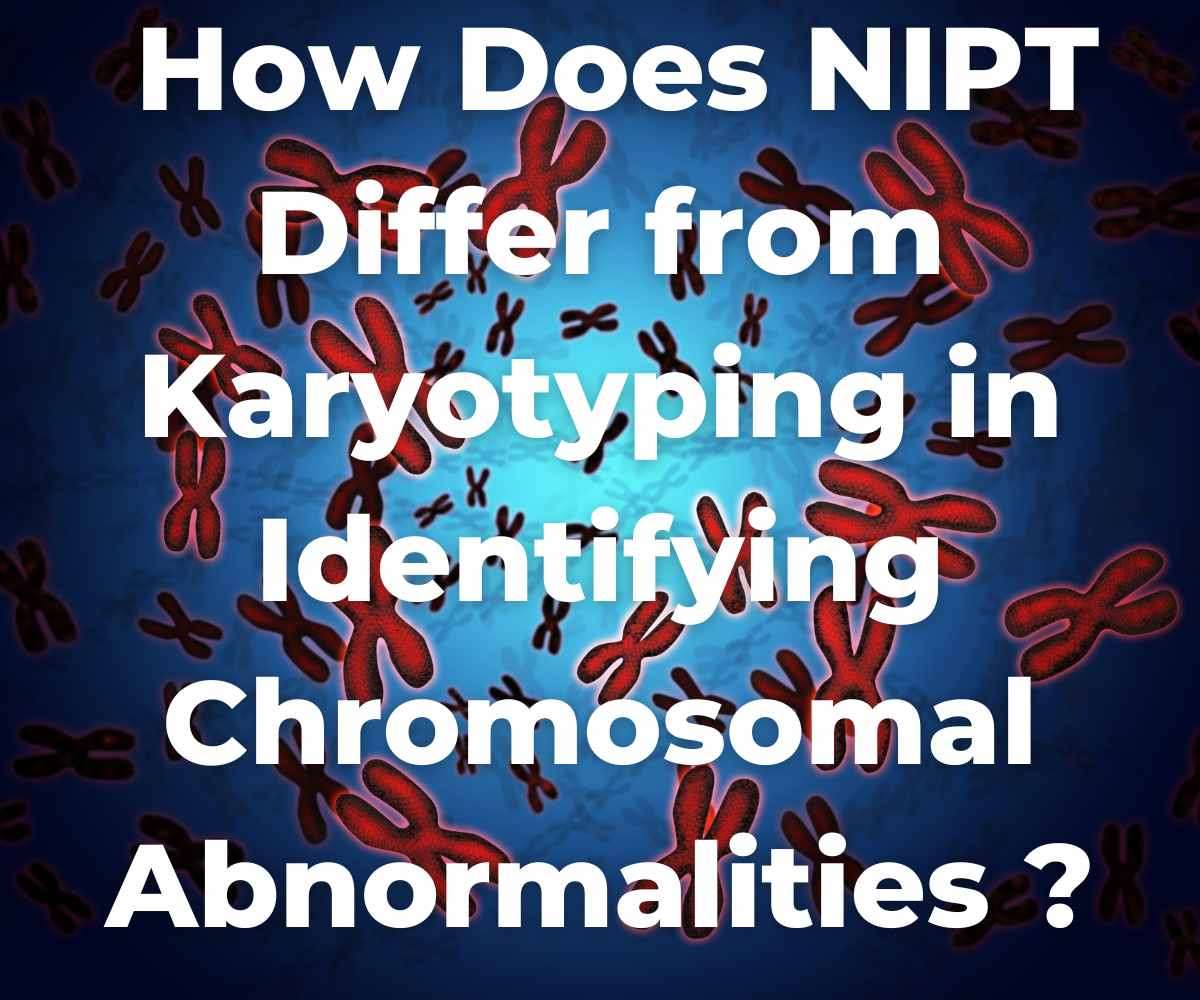how does nipt differ from karyotyping in identifying chromosomal abnormalities
Description
How Does NIPT Differ from Karyotyping in Identifying Chromosomal Abnormalities?
Chromosomal testing plays a crucial role in understanding genetic information during pregnancy. It helps detect abnormalities that could affect a baby's health and development.
Noninvasive and traditional approaches differ significantly in techniques and outcomes among the available methods. Parents rely on these tests to understand their baby's genetic makeup. Let’s explore how these methods compare and what makes each unique.
What is NIPT?
The NIPT test identifies common chromosomal conditions that could impact the baby’s development. Analyzing fetal DNA fragments detects abnormalities like trisomies involving an extra chromosome, such as Down syndrome (trisomy 21), Edwards syndrome (trisomy 18), and Patau syndrome (trisomy 13).
The test's high sensitivity ensures that potential issues are flagged early, enabling further investigation.
NIPT is not limited to trisomies; it can also identify sex chromosome abnormalities, such as Turner syndrome. Early detection through this method provides families with critical information for planning and decision-making.
Although highly accurate, positive results often require confirmation through more comprehensive diagnostic tests.
The Accuracy and Advantages of NIPT
NIPT is known for its accuracy in detecting certain chromosomal conditions, offering results with minimal false positives.
This reliability makes it a trusted option for expectant parents and healthcare providers. The test’s non-invasive nature eliminates the risks associated with invasive diagnostic methods.
With results available within a week, NIPT provides timely information during the crucial early stages of pregnancy.
Another advantage is its ability to screen pregnancies regardless of maternal age or risk factors. This inclusivity ensures that more families can benefit from early analysis. NIPT’s simplicity and efficiency reduce the emotional stress associated with prenatal testing. Providing a clear understanding of potential risks empowers families to make informed decisions.
How NIPT Detects Chromosomal Abnormalities
Non-Invasive Prenatal Testing (NIPT) detects chromosomal abnormalities by analyzing fragments of fetal DNA in the mother’s blood. These DNA fragments, known as cell-free fetal DNA, circulate naturally and provide vital genetic information. The test identifies conditions like trisomy 21 (Down syndrome), trisomy 18, and trisomy 13 by detecting extra or missing chromosomes.
Advanced technology enables the precise analysis of these fragments, providing highly accurate screening results. NIPT can also identify abnormalities in sex chromosomes, such as Turner syndrome or Klinefelter syndrome. Its ability to detect common conditions early makes it an essential tool in modern prenatal care.
What Is Karyotyping?
Karyotyping is a traditional diagnostic method that examines chromosomes under a microscope. It involves collecting a sample of cells, often through amniocentesis or chorionic villus sampling.
By visualizing the chromosomes, karyotyping provides a detailed view of their number and structure.
The procedure can identify various genetic conditions, including structural abnormalities and rare disorders. It has been a cornerstone of genetic analysis for decades.
How Karyotyping Detects Chromosomal Abnormalities
Karyotyping identifies abnormalities by analyzing a cell sample's size, shape, and number of chromosomes. This method is highly effective in detecting conditions caused by missing, extra, or rearranged them.
It provides comprehensive insights into genetic disorders, such as balanced translocations or deletions. Karyotyping can reveal intricate structural issues that other methods may not detect.
The test is beneficial for identifying rare genetic conditions or confirming screening tool results. It offers a complete chromosomal map, supporting detailed and accurate diagnoses. Karyotyping is essential for cases requiring in-depth genetic analysis or when family history suggests a risk.
The nipt test offers a non-invasive, early, and accurate way to screen for common chromosomal conditions. Karyotyping provides detailed diagnostic insights into rare and complex genetic disorders, complementing initial screenings.
Together, these methods offer a comprehensive approach to understanding the abnormalities.
Each has unique advantages, depending on the level of detail and risk factors involved.
Similar blog:
What Justifies the Value of Nutritional Counseling?






















